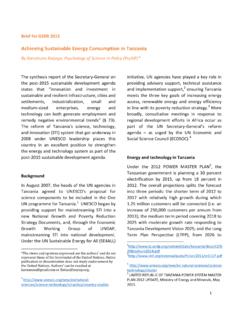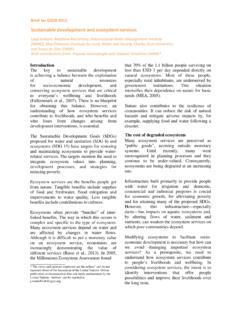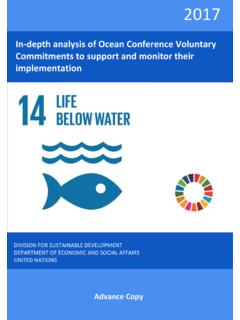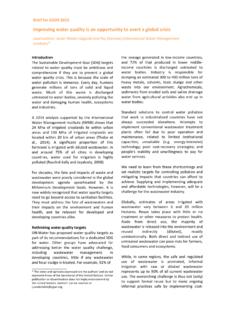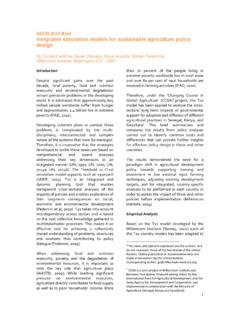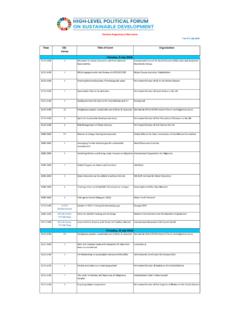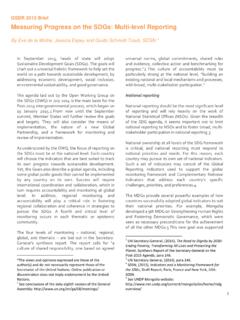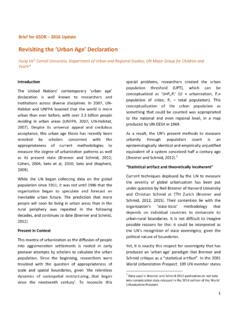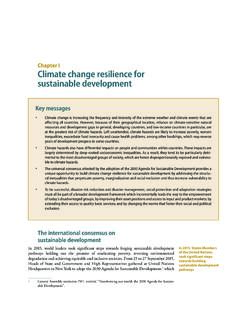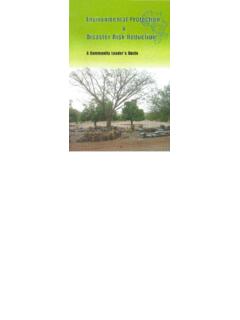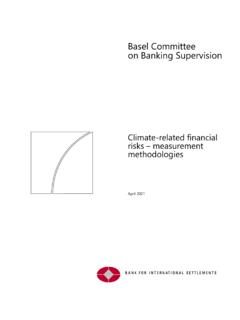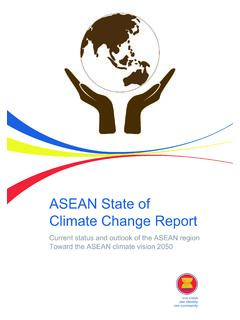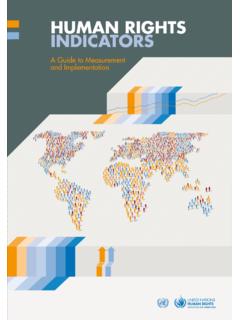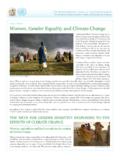Transcription of Climate Change and Food Systems - United Nations
1 EG37CH08-VermeulenARI6 October 201216:22 Climate Changeand Food SystemsSonja J. Vermeulen,1,2 Bruce M. Campbell,2,3and John Ingram4,51 Department of Plant and environmental Sciences, University of Copenhagen,Frederiksberg C, DK-1958, Denmark2 Consortium of International Agricultural Research Centers Research Program on ClimateChange, Agriculture and Food Security, Frederiksberg C, DK-1958, Denmark;email: Center for Tropical Agriculture (CIAT), Cali, Colombia4 environmental Change Institute, University of Oxford, Oxford OX1 3QY, United Kingdom; email: Environment Research Council, Swindon SN2 1EU, United KingdomAnnu. Rev. Environ. Resour. 2012. 37:195 222 First published online as a Review in Advance onJuly 30, 2012 TheAnnual Review of Environment and Resourcesis online at article s 2012 by Annual rights reserved1543-5938/12/1121-0195$ security, agriculture, food chain, mitigation, adaptation,greenhouse gasAbstractFood Systems contribute 19% 29% of global anthropogenic green-house gas (GHG) emissions, releasing 9,800 16,900 megatonnes ofcarbon dioxide equivalent (MtCO2e) in 2008.
2 Agricultural production,including indirect emissions associated with land-cover Change , con-tributes 80% 86% of total food system emissions, with significant re-gional variation. The impacts of global Climate Change on food systemsare expected to be widespread, complex, geographically and tempo-rally variable, and profoundly influenced by socioeconomic statistical studies and integrated assessment models provideevidence that Climate Change will affect agricultural yields and earnings,food prices, reliability of delivery, food quality, and, notably, food producers and consumers of food will be more vulnerableto Climate Change owing to their comparatively limited ability to investin adaptive institutions and technologies under increasing climatic synergies among food security, adaptation, and mitigation are fea-sible. But promising interventions, such as agricultural intensificationor reductions in waste, will require careful management to distributecosts and benefits Rev.
3 Environ. Resourc. :195-222. Downloaded from United Nations Library on 05/13/13. For personal use October 201216:22 Contents1. Purpose of the Review .. Climate Change and FoodSystems: Concepts 1962. IMPACTS OF FOOD SYSTEMSON Climate Change .. Preproduction Activities .. Production Activities .. Postproduction Activities .. 2003. IMPACTS OF CLIMATECHANGE ON FOODSYSTEMS .. Production Activities .. Postproduction Activities .. Broader Effects on FoodSystems and Food Security .. 2074. INTERVENTIONS TO MANAGETHE INTERACTIONSBETWEEN FOOD SYSTEMSANDCLIMATE Adaptation and Food Security .. Mitigation and Food Security .. 2121. Purpose of the ReviewDuring the second half of the twentiethcentury, global food supply and distributiondeveloped rapidly enough to keep abreast ofpopulation growth and, for many regions, tobring gains to food security in terms of moreaffordable, reliable, and safe food for all sectorsof society.
4 The last decade has seen a rapidreversal of these gains. Achieving food securityin the face of accelerating food demand, com-petition for depleting resources, and the failingability of the environment to buffer increasinganthropogenic impacts is now widely seenas the foremost challenge of our time (1 5). Climate Change is one among a set of intercon-nected trends and risks facing agriculture andfood Systems (6). Other components of globalenvironmental Change that are driving thefuture of food security include rapid changes inbiodiversity, land cover, availability of freshwa-ter, oceanic acidification, and the nitrogen andphosphorus cycles (7). Future food security forall will ultimately depend on management of theinteracting trajectories of socioeconomic andenvironmental changes. Climate Change , andespecially increased Climate variability, is, how-ever, arguably one of the greatest challengesto food security, particularly via its effects onthe livelihoods of low-income individuals andcommunities, which have less capacity for adap-tation and depend on highly Climate -sensitiveactivities such as agriculture (8).
5 The purpose of this review is to provide acritical overview of the now extensive literatureon the tightly coupled relationship between cli-mate Change and food Systems . In particular, itseeks to draw attention to wider issues of foodsystems beyond food production, to highlightthe distribution of Climate -related impacts onfood security across sectors of global society,and to set out the opportunities and challengesin food Systems for integrating the options formitigation, adaptation, and food Climate Change and FoodSystems: Concepts and RelationshipsThe drivers and patterns of observed and pre-dicted Climate Change are well reviewed (9). Auseful distinction can be drawn between long-term (decadal) trends and near-term increasesin variability in Climate (10), though the sameradiative forcing drives both. In the absence ofcomplete mitigation, society needs, in the longterm, to adapt to gradual changes in the meansand distributions of temperatures and precipi-tation.
6 Depending on the speed and directionof these trends, incremental or transformativeadaptation is needed (10). Most immediately, Climate Change is being experienced as increas-ing temporal and spatial variability in temper-ature, precipitation, and winds, particularly theincidence and magnitude of extreme types of extreme events that are likely toincrease include the frequency and intensity of196 Vermeulen Campbell IngramAnnu. Rev. Environ. Resourc. :195-222. Downloaded from United Nations Library on 05/13/13. For personal use October 201216:22heat waves, frequency of heavy precipitationevents and associated floods, intensity of trop-ical cyclone events, and incidence of extremelyhigh sea levels owing to storm surges. Longerdry spells in some areas, and the area affected bydrought each year, are likely to increase. Othertypes of extreme events, such as cold spells andfrosts, will decrease in frequency and inten-sity (9).
7 In the short term, therefore, increasingclimate variability has more impact than longer-term Change in mean values, and the appropri-ate focus of adaptation is Climate risk manage-ment (11). The need for this focus will continueeven though the need to address changes inmean values over the longer term will chain activities are the manufactur-ing and distribution of inputs (seed, animalfeed, fertilizers, pest control); agricultural pro-duction (crops, livestock, fisheries, wild foods);primary and secondary processing, packaging,storage, transport and distribution; marketingand retail; catering; domestic food manage-ment; and waste disposal. In some cases, thissupply is linked through a cold chain in whichcontinuous refrigeration is used to extend andensure the shelf life of fresh and processedfoods. Importantly, food Systems encompassnot only food chain activities but also the out-comes of these activities and their governance(12, 13).
8 All humans participate in food systemsand in doing so have multiple objectives: liveli-hoods, profit, and environmental stewardship,as well as securing food (for nutrition, pleasureand social functions).Food Systems worldwide are in flux, owingto demand-side drivers (population growth,shifting patterns of consumption, urbanization,and income distribution) and trends in foodsupply, which are related to Climate Change , tocompetition (for water, energy, and land), andto the interactions between food productionand other ecosystem services (4). Other impor-tant trends are changing institutional and socialprocesses within the food system, such as tradeliberalization, associated market penetration bytransnational food companies, restructuring ofretail toward supermarkets, food industry mar-keting, and consumer attitudes (to social status,health, and sustainability) (1, 14).
9 Broadlyspeaking, there is no global food system butrather a set of partially linked supply chains forspecific products, sometimes global in extent( , soy protein) and sometimes more local( , cassava and other staple food crops inmuch of the world).The food industry is highly fragmented, andhence competitive, relative to other resource-based industries, such as mining and top 50 food processors account for less than20% of retail sales by value (15) and, by exten-sion, an even smaller proportion of total foodconsumption across all formal, informal, andnonmarket channels. However, there is highmarket concentration for particular foodstuffs,for example, coffee, and for particular portionsof the supply chain, notably the seed supplysector (16), and increasingly the retail share in retail food markets in-creased from 5% 10% in 1990 to 50% 60% inSouth America and South Africa, and to 20% 50% in Mexico, Central America, and South-east Asia by 2007 (17).
10 Well-functioning markets do not guaranteeadequate nutrition to all. Food Systems arealready unable to prevent widespread chronicmalnutrition, as measured by the 178 millionchildren who are stunted, predominantly inSouth Asia and Africa. Even in high-incomecountries, sizeable portions of the populationare food insecure (5). Hunger and malnutritionare trenchant because, being closely linked topoverty, their underlying causes are complex(18). Governments regularly intervene inmarkets to guarantee sustained supplies of foodthat ensure stable and affordable prices for abroad spectrum of consumers to provide them-selves with reliable, nutritious, and safe agricultural countries, these prices shouldalso be sufficient to support farm generally, poverty reduction initiatives,such as job creation or social welfare schemes,are essential to achieving food security forindividuals and households most vulnerableto chronic and acute disruptions to foodavailability, access, and utilization (19 21).

